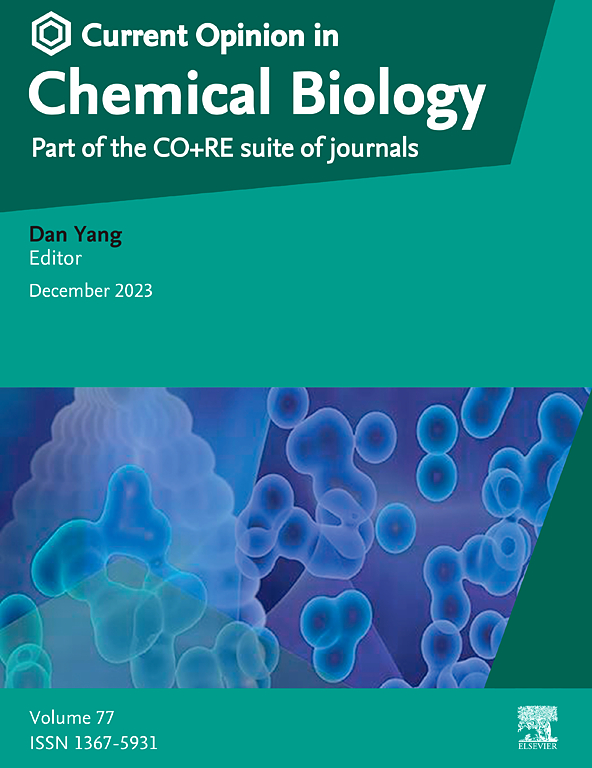开发用于可持续燃料生产的光激活人工酶。
IF 6.1
2区 生物学
Q1 BIOCHEMISTRY & MOLECULAR BIOLOGY
引用次数: 0
摘要
酶在温和条件下催化分子反应具有显著的效率和选择性。光激活酶利用吸收光的发色团来驱动化学转化,理想情况下使用阳光作为能量来源。发色团与天然酶的直接连接是有利的,因为可以获得有关潜在催化机制的信息。人工酶的发展旨在模仿天然酶,在简化、健壮的框架内高效地产生有价值的产品。光引发的人工酶催化结合了这些策略,代表了可持续产生增值产品的有前途的途径。此外,虽然早期的系统通常结合三种成分进行催化-酶,光敏剂和牺牲电子供体-我们描述了这种方法的适应性,其中发色团固定在酶上,消除了扩散碰撞的需要。后者是有利的,因为它提供了对催化机制的更深入的了解,并有利于进一步优化所设计的结构。在这种观点下,我们强调了几个光驱动的人工金属酶的例子,并建议正在进行的和未来的努力应该利用现有的天然酶的机制研究作为下一代光激活蛋白催化剂战略设计的基础。本文章由计算机程序翻译,如有差异,请以英文原文为准。
Developing photoactivated artificial enzymes for sustainable fuel production
Enzymes catalyze molecular reactions with remarkable efficiency and selectivity under mild conditions. Photoactivated enzymes make use of a light-absorbing chromophore to drive chemical transformations, ideally using sunlight as an energy source. The direct attachment of a chromophore to native enzymes is advantageous, as information on the underlying catalytic mechanisms can be obtained. Artificial enzyme development seeks to mimic natural enzymes to generate valuable products with high efficiency in a simplified, robust framework. Light-initiated artificial enzymatic catalysis combines these strategies and represents a promising avenue for sustainable generation of value-added products. Furthermore, while early systems often combined three components for catalysis-- the enzyme, a photosensitizer, and a sacrificial electron donor-- we describe an adaptation of this approach in which the chromophore is immobilized on the enzyme, removing the need for diffusional collision. The latter is advantageous as it provides deeper insight into the catalytic mechanism and facilitates further optimization of the designed construct. In this opinion, we highlight several examples of light-driven, artificial metalloenzymes, and suggest that ongoing and future efforts should leverage prior mechanistic studies on native enzymes as a foundation for strategic design of next-generation photoactivated protein-based catalysts.
求助全文
通过发布文献求助,成功后即可免费获取论文全文。
去求助
来源期刊

Current Opinion in Chemical Biology
生物-生化与分子生物学
CiteScore
13.30
自引率
1.30%
发文量
113
审稿时长
74 days
期刊介绍:
COCHBI (Current Opinion in Chemical Biology) is a systematic review journal designed to offer specialists a unique and educational platform. Its goal is to help professionals stay informed about the growing volume of information in the field of Chemical Biology through systematic reviews.
 求助内容:
求助内容: 应助结果提醒方式:
应助结果提醒方式:


